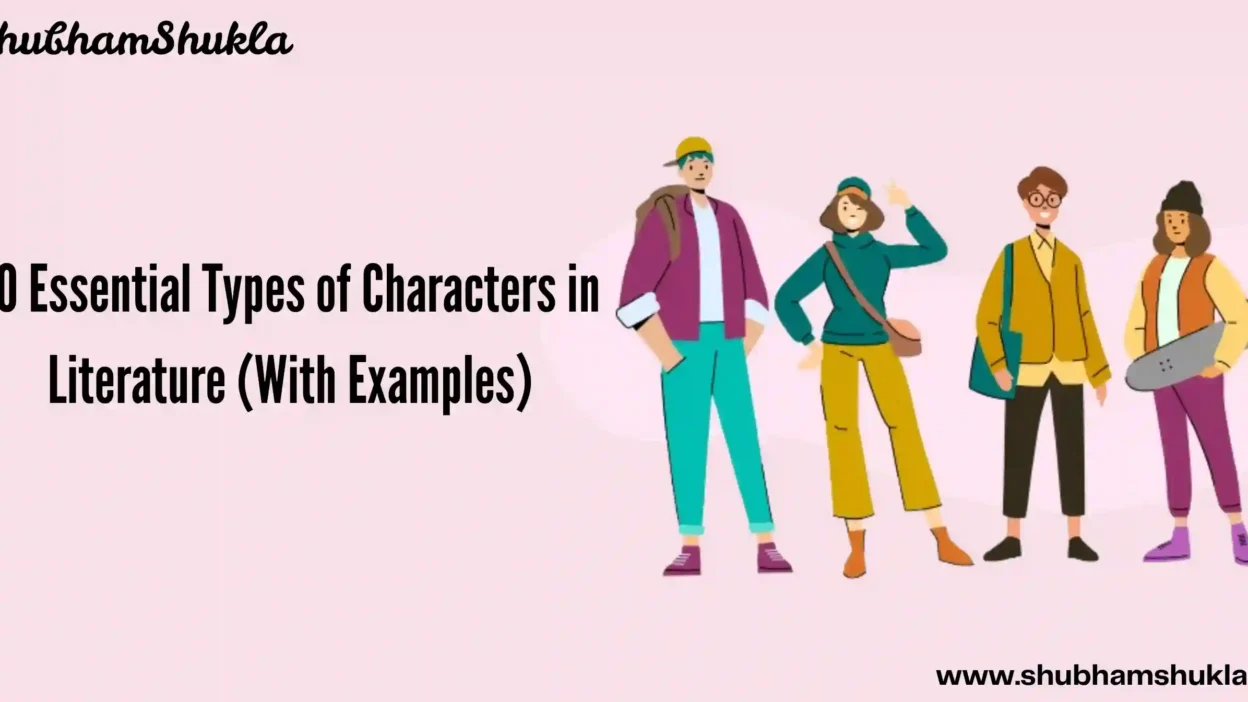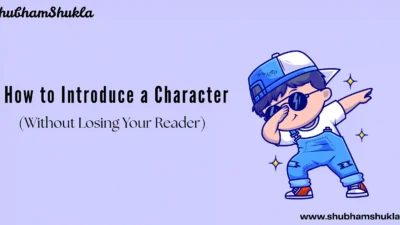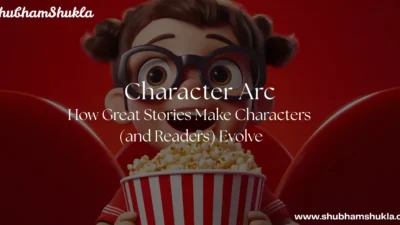Have you ever loved a story because of one unforgettable character? Whether it’s a brave hero, a sinister villain, or a comic sidekick, characters breathe life into literature. But not all characters are created equal. In fact, there are specific types of characters that show up across all great stories.
Recognizing them not only makes reading more enjoyable but also helps writers craft deeper, more engaging tales. So, let’s explore the 10 essential types of characters in literature, complete with famous examples to help bring them to life.
A List of Different Types of Characters in Literature
1. The Protagonist
The protagonist is the heart of the story. They’re the character we root for, the one facing challenges, growing, and often learning something profound.
Example: Harry Potter is a classic protagonist. From discovering he’s a wizard to facing Voldemort, the series follows his personal growth and internal conflicts.
Whether they’re chasing a dream or fighting evil, the protagonist drives the story forward and gives readers someone to invest in emotionally.
2. The Antagonist
Every great story needs conflict, and that often comes from the antagonist. This character opposes the protagonist’s goals, creating tension.
Example: Lord Voldemort in Harry Potter isn’t just evil for the sake of it—his dark past and motivations make him a compelling antagonist.Not all antagonists are villains. Sometimes, it’s a system (The Hunger Games), nature (Moby Dick), or even the protagonist’s own flaws.
3. The Foil
A foil is a character who contrasts with the protagonist to highlight their traits, strengths, or weaknesses.
Example: Dr. Watson in Sherlock Holmes is more grounded and empathetic, which makes Holmes’ eccentric genius stand out even more.
The foil isn’t there to overshadow the main character—it’s like adding salt to chocolate; the contrast enhances the flavor.
4. The Confidant
The confidant is the character the protagonist trusts and opens up to, offering insight into their thoughts and feelings.
Example: Samwise Gamgee in The Lord of the Rings supports Frodo through his darkest moments and helps us see Frodo’s vulnerability.
This role strengthens emotional depth and often serves as the story’s moral compass.
5. The Dynamic Character
A dynamic character goes through major internal change. This can be a shift in beliefs, values, or attitude.
Example: Elizabeth Bennet in Pride and Prejudice begins as judgmental but learns to see beyond first impressions.
Readers love dynamic characters because they grow—just like real people.
6. The Static Character
Unlike their dynamic counterparts, static characters stay the same. But that’s not a flaw—it often reinforces consistency or a theme.
Example: Sherlock Holmes rarely changes in personality, but his consistent brilliance makes him iconic.
Static characters can provide stability or act as benchmarks for how much others evolve.
7. The Stock Character
Stock characters are literary shortcuts. They represent familiar types and come with built-in expectations.
Example: The “mad scientist” like Dr. Jekyll plays into a known trope—genius gone too far.
Used sparingly and creatively, stock characters can anchor a story without stealing focus.
8. The Round Character
Round characters are complex, layered, and realistic. They often surprise the reader and evolve in believable ways.
Example: Jay Gatsby in The Great Gatsby is charming and mysterious, but deeply flawed and tragic underneath.
They make stories richer because they mirror the messiness of real people.
9. The Flat Character
In contrast, flat characters have one or two defining traits and don’t change. But they’re still essential.
Example: Mr. Collins in Pride and Prejudice is comically pompous and never strays from that.
They serve specific roles—comic relief, side conflict, or thematic representation.
10. The Anti-Hero
The anti-hero breaks the rules. They’re central characters who lack conventional hero traits—like honesty or nobility—but are still compelling.
Example: Walter White from Breaking Bad is smart and driven, but morally questionable.
They challenge our notions of right and wrong and often make us uncomfortable in the best way.
Bonus: Archetypal Characters
Archetypes are universal patterns seen across cultures and time periods. These include:
- The Hero (e.g., King Arthur)
- The Mentor (e.g., Gandalf)
- The Trickster (e.g., Loki)
These characters resonate deeply because they speak to shared human experiences.
How Authors Use These Characters
Authors employ these basic character traits to create dynamic and interesting stories that readers will connect with. Protagonists drive the plot, whilst antagonists generate tension and conflict.
Supporting characters such as mentors, sidekicks, and foils help to reveal diverse aspects of the main characters. Flat or stock characters frequently depict familiar characteristics, making the plot more relevant.
Authors use these archetypes carefully to build fascinating storylines, develop themes, and elicit emotional responses, ensuring that readers are invested from start to finish.
Why Understanding Character Types Matter
Understanding character types is important because it allows readers to recognize the roles each character plays in a story. Whether it’s the hero, villain, or sidekick, each kind has a narrative function that propels the action and deepens themes.
Knowing character kinds helps authors create well-rounded, relevant, and intriguing characters. It also enables meaningful character development and conflict. Recognizing these types improves literary analysis and enriches the reading and storytelling experience.
Conclusion
Characters are the soul of every story. From heroes to villains, and everything in between, each type serves a purpose. They entertain, teach, and challenge us. So next time you dive into a book, look closer at what type of character you are really reading about?
Frequently asked questions
1. What is the difference between a flat and a round character?
Flat characters have limited traits and don’t change. Round characters are more complex, with depth and development.
2. Can a protagonist also be an antagonist?
Yes, especially in stories where the main character’s biggest enemy is themselves, like in psychological dramas.
3. Are anti-heroes and villains the same?
Not exactly. Anti-heroes are flawed main characters, while villains are usually antagonists opposing the hero.
4. Why do authors use static characters?
Static characters offer stability, contrast, or emphasize thematic messages without undergoing transformation.
5. Can one character fit multiple types?
Absolutely. Great characters often blend multiple roles, like being both a confidant and a foil.



